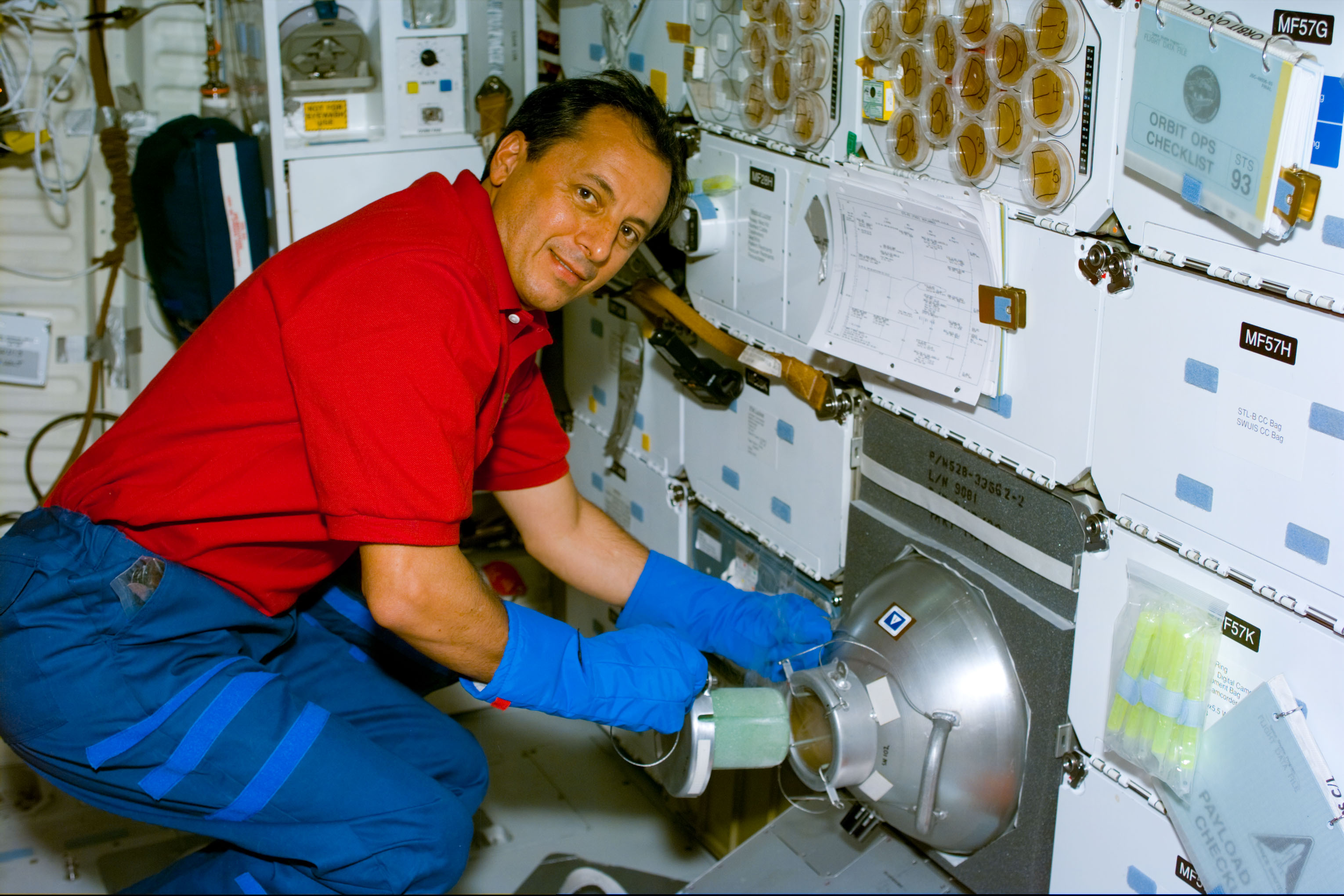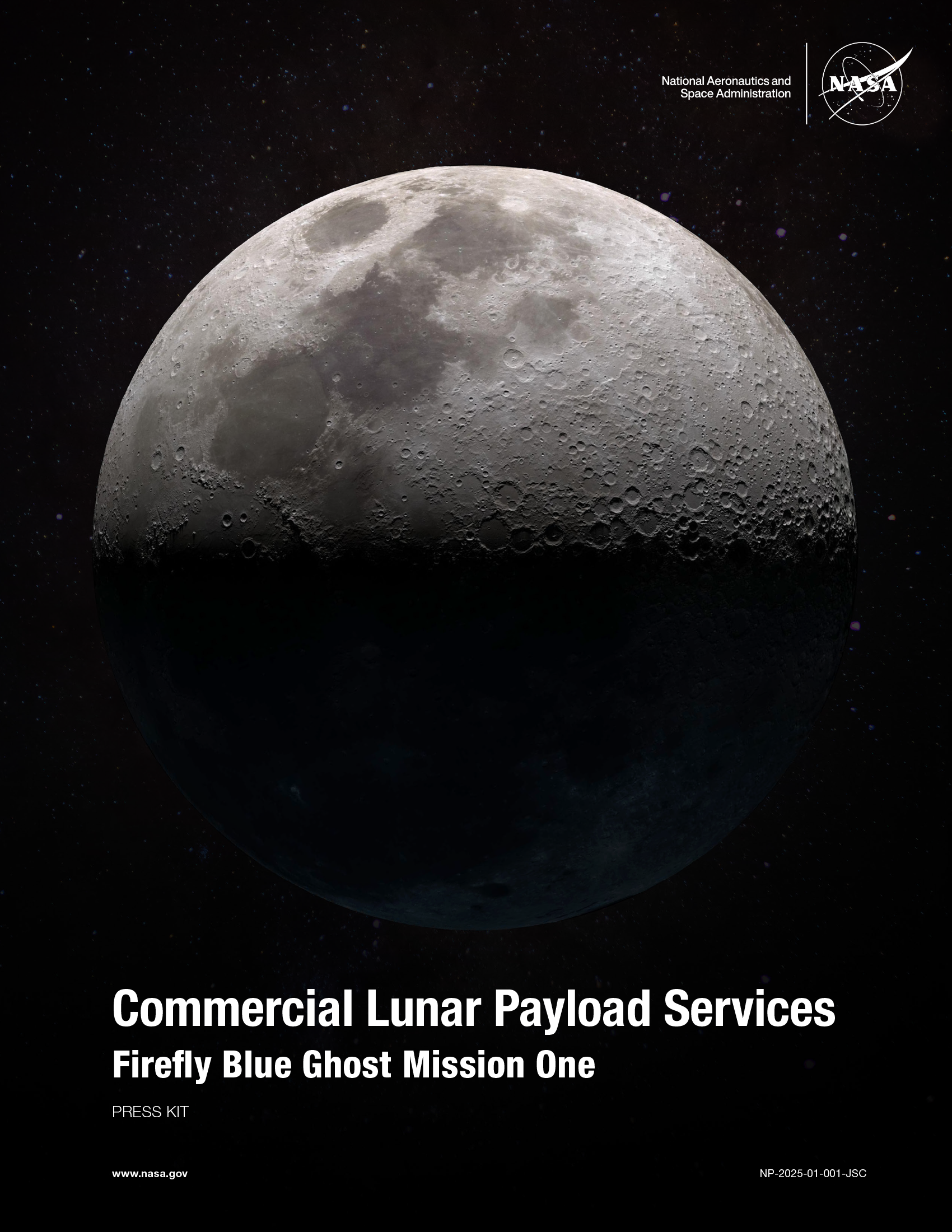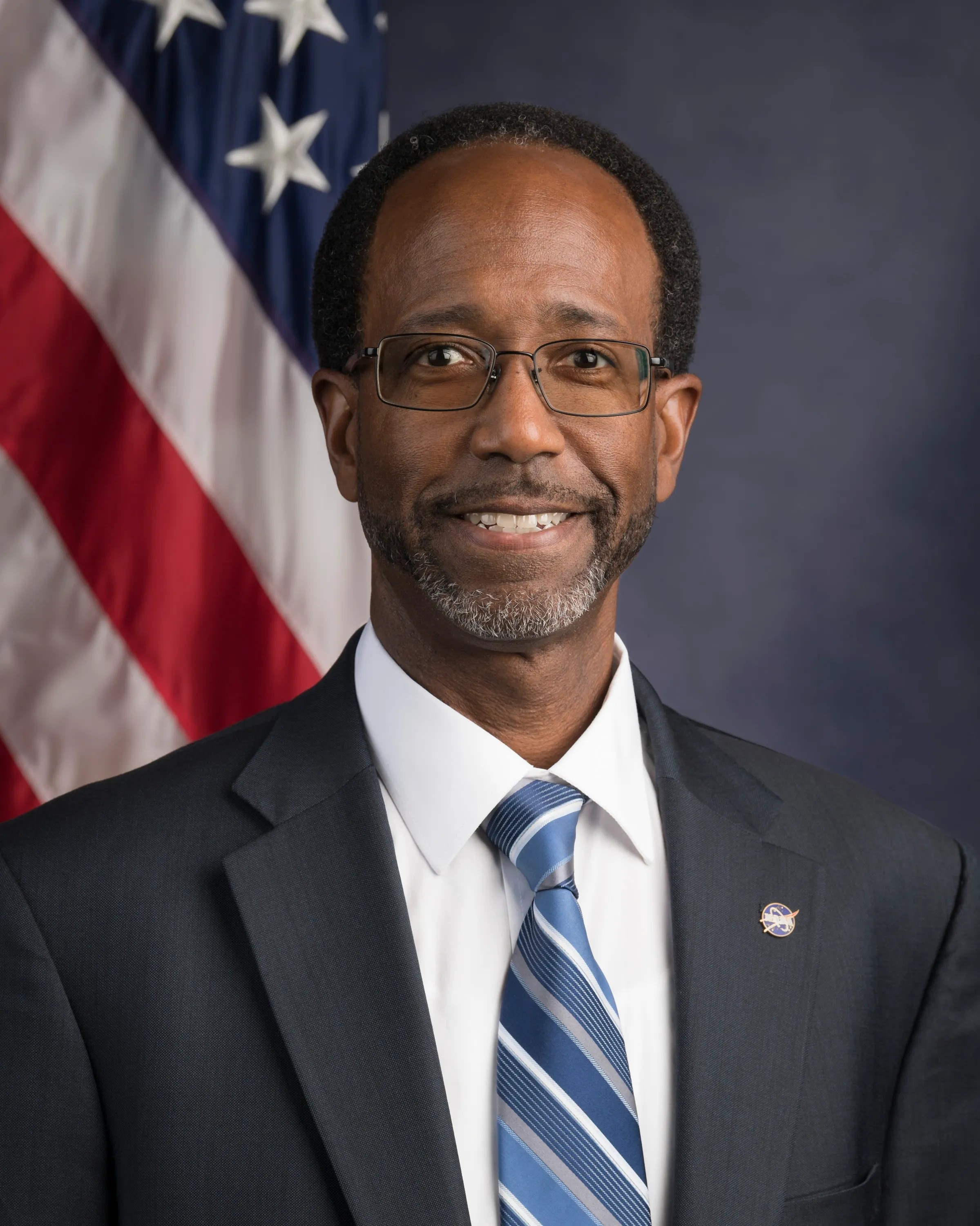25 Years Ago: STS-93, Launch of the Chandra X-Ray Observatory
On July 23, 1999, space shuttle Columbia took to the skies on its 26th trip into space, to deliver its heaviest payload ever – the Chandra X-ray Observatory. The STS-93 crew included Commander Eileen M. Collins, the first woman to command a space shuttle mission, Pilot Jeffrey S. Ashby, and Mission Specialists Catherine “Cady” G. […]

On July 23, 1999, space shuttle Columbia took to the skies on its 26th trip into space, to deliver its heaviest payload ever – the Chandra X-ray Observatory. The STS-93 crew included Commander Eileen M. Collins, the first woman to command a space shuttle mission, Pilot Jeffrey S. Ashby, and Mission Specialists Catherine “Cady” G. Coleman, Steven A. Hawley, and Michel A. Tognini of the French Space Agency (CNES). On the mission’s first day, they deployed Chandra, the most powerful X-ray telescope. With a planned five-year lifetime, Chandra continues its observations after a quarter century. For the next four days, the astronauts worked on twenty secondary middeck payloads and conducted Earth observations. The successful five-day mission ended with a night landing.



Left: The STS-93 crew patch. Middle: Official photo of the STS-93 crew of Eileen M. Collins, left, Steven A. Hawley, Jeffrey S. Ashby, Michel A. Tognini of France, and Catherine “Cady” G. Coleman. Right: The patch for the Chandra X-ray Observatory.
Tognini, selected by CNES in 1985 and a member of NASA’s class of 1995, received the first assignment to STS-93 in November 1997. He previously flew aboard Mir as a cosmonaut researcher, spending 14 days aboard the station in 1992. On March 5, 1998, First Lady Hilary R. Clinton announced Collins’ assignment as the first woman space shuttle commander in a ceremony at the White House together with President William J. “Bill” Clinton. NASA announced the rest of the crew the same day. For Collins, selected in the class of 1990, STS-93 represented her third space mission, having previously served as pilot on STS-63 and STS-84. Ashby, a member of the class of 1994, made his first flight aboard STS-93, while Coleman, selected in 1992, made her second flight, having flown before on STS-73. Hawley made his fifth flight, having previously served as a mission specialist on STS-41D, STS-61C, STS-31, and STS-82. He has the distinction of making the last flight by any member of his class of 1978, more than 21 years after his selection.


Left: Schematic of the Chandra X-ray Observatory showing its major components. Right: Diagram of the trajectory Chandra took to achieve its final operational 64-hour orbit around the Earth – IUS refers to the two burns of the Inertial Upper Stage and IPS to the five burns of Chandra’s Integral Propulsion System.
Because the Earth’s atmosphere absorbs X-ray radiation emitted by cosmic sources, scientists first came up with the idea of a space-based X-ray telescope in the 1970s. NASA launched its first X-ray telescope called Einstein in 1978, but scientists needed a more powerful instrument, and they proposed the Advanced X-ray Astrophysics Facility (AXAF). After a major redesign of the telescope in 1992, in 1998 NASA renamed AXAF the Chandra X-ray Observatory after Indian American Nobel Prize-winning theoretical physicist Subrahmanyan Chandrasekhar who made significant contributions to our knowledge about stars, stellar evolution, and black holes. Chandra, the third of NASA’s four Great Observatories, can detect X-ray sources 100 times fainter than any previous X-ray telescope. At 50,162 pounds including the Inertial Upper Stage (IUS) it used to achieve its operational orbit, Chandra remains the heaviest payload ever launched by the space shuttle, and at 57 feet long, it took up nearly the entire length of the payload bay. It has far exceeded its expected five-year lifetime, still returning valuable science after 25 years.



Left: The STS-93 crew during the Terminal Countdown Demonstration Test. Middle: The Chandra X-ray Observatory loaded into Columbia’s payload bay. Right: Liftoff of Columbia on the STS-93 mission carrying the Chandra X-ray Observatory and the first woman shuttle commander.
Columbia returned to KSC following its previous flight, the STS-90 Neurolab mission, in May 1998. Workers in KSC’s Orbiter Processing Facility (OPF) serviced the orbiter and removed the previous payload. With all four orbiters at KSC at the same time, workers temporarily stowed Columbia in the Vehicle Assembly Building (VAB), returning it to the OPF for final preflight processing on April 15, 1999. Rollover of Columbia from the OPF to the VAB took place on June 2, where workers mated it with an external tank and two solid rocket boosters. Following integrated testing, the stack rolled out to Launch Pad 39B on June 7. The crew participated in the Terminal Countdown Demonstration Test on June 24. Workers placed Chandra in Columbia’s payload bay three days later.
On July 23, 1994, Columbia thundered into the night sky from KSC’s Launch Pad 39B to begin the STS-93 mission. Two previous launch attempts on July 20 and 22 resulted in scrubs due to a faulty sensor and bad weather, respectively. As Columbia rose into the sky, for the first time in shuttle history a woman sat in the commander’s seat. Far below, problems arose that could have led to a catastrophic abort scenario. During the engine ignition sequence, a gold pin in Columbia’s right engine came loose, ejected with great force by the rapid flow of hot gases, and struck the engine’s nozzle, punching holes in three of its hydrogen cooling tubes. Although small, the hydrogen leak caused the engine’s controller to increase the flow of oxidizer, making the engine run hotter than normal. Meanwhile, a short-circuit knocked out the center engine’s digital control unit (DCU) and the right engine’s backup DCU. Both engines continued powered flight without a redundant DCU, with a failure in either causing a catastrophic abort. Although this did not occur, the higher than expected oxidizer usage led to main engine cutoff occurring 1.5 seconds early, leaving Columbia in a lower than planned orbit. The shuttle’s Orbiter Maneuvering System engines made up for the deficit. The harrowing events of the powered flight prompted Ascent Flight Director John P. Shannon to comment, “Yikes! We don’t need any more of these.”


Left: Eileen M. Collins, the first woman shuttle commander, shortly after reaching orbit. Right: First time space flyer STS-93 Pilot Jeffrey S. Ashby, shortly after reaching space.
After reaching orbit, the crew opened the payload bay doors and deployed the shuttle’s radiators, and removed their bulky launch and entry suits, stowing them for the remainder of the flight. The astronauts prepared for the mission’s primary objective, deployment of Chandra, and also began activating some of the middeck experiments.



Left: The Chandra X-ray Observatory in Columbia’s payload bay shortly after reaching orbit. Middle: Chandra raised to the deployment angle. Right: Chandra departs Columbia.
Coleman had prime responsibility for deploying Chandra. After initial checkout of the telescope by ground teams, the astronauts tilted Chandra and the IUS to an angle of 29 degrees. After additional checks, they tilted it up to the release angle of 58 degrees. A little over seven hours after launch, Coleman deployed the Chandra/IUS stack. Collins and Ashby flew Columbia to a safe distance, and about an hour after deployment, the IUS fired its first stage engine for about two minutes, followed by a two-minute burn of the second stage. This placed Chandra in a temporary elliptical Earth orbit with a high point of 37,200 miles. After separation of the IUS, Chandra used its own propulsion system over the next 10 days to raise its altitude to 6,214 miles by 86,992 miles, its operational orbit, circling the Earth every 64 hours. For the next four days of the mission, the astronauts operated about 20 middeck experiments, including a technology demonstration of a treadmill vibration isolation system planned for the International Space Station.



Left: Michel A. Tognini works with the Commercial Generic Bioprocessing Apparatus. Middle: Jeffrey S. Ashby checks the status of the Space Tissue Lab experiment. Right: Catherine G. Coleman harvests plants from the Plant Growth in Microgravity experiment.



Left: Catherine G. Coleman, left, and Michel A. Tognini pose near the Lightweight Flexible Solar Array Hinge technology demonstration experiment. Middle: Stephen A. Hawley checks the status of the Micro Electromechanical Systems experiment. Right: Tognini places samples of the Biological Research in Canisters experiment into a gaseous nitrogen freezer.



Left: Eileen M. Collins runs on the Treadmill Vibration Isolation System. Middle: Stephen A. Hawley, left, and Michel A. Tognini operate the Southwest Ultraviolet Imaging System instrument. Right: Inflight photograph of the STS-93 crew.




A selection of the STS-93 crew Earth observation photographs. Left: Laguna Verde in Chile. Middle left: Sunrise over the Mozambique Channel. Middle right: Darling River and lakes in Australia. Right: The Society Islands of Bora Bora, Tahaa, and Raiatea.



Left: Eileen M. Collins prepares to bring Columbia home. Middle: Columbia streaks through the skies over NASA’s Johnson Space Center in Houston during reentry. Right: Collins guides Columbia to a smooth touchdown on the Shuttle Landing Facility at NASA’s Kennedy Space Center in Florida.



Left: Three holes visible in the hydrogen cooling tubes of Columbia’s right main engine, seen after landing. Middle: The STS-93 crew pose in front of Columbia on the Shuttle Landing Facility at NASA’s Kennedy Space Center in Florida. Right: Eileen M. Collins addresses the crowd at Houston’s Ellington Field during the welcome home ceremony for the STS-93 crew, as Vice President Albert “Al” A. Gore and other dignitaries listen.
At the end of five days, the astronauts finished the last of the experiments and prepared for the return to Earth. On July 28, they closed Columbia’s payload bay doors, donned their launch and entry suits, and strapped themselves into their seats for entry and landing. Collins piloted Columbia to a smooth landing on KSC’s Shuttle Landing Facility, completing the 12th night landing of the shuttle program. The crew had flown 80 orbits around the Earth in 4 days, 22 hours, and 50 minutes. Columbia wouldn’t fly again until March 2002, the STS-109 Hubble Servicing Mission-3B. A postflight investigation into the cause of the short on ascent that led to two DCUs failing revealed a wire with frayed insulation, likely caused by workers inadvertently stepping on it, that rubbed against a burred screw head that had likely been there since Columbia’s manufacture. The incident resulted in significant changes to ground processes during shuttle inspections and repairs. With regard to the pin ejected during engine ignition that damaged the hydrogen cooling tubes, investigators found that those pins never passed any acceptance testing. Since STS-93 marked the last flight of that generation of main engines, newer engines incorporated a different configuration, requiring no design or other changes.
Enjoy the crew narrate a video about the STS-93 mission. Read Hawley’s recollections of the STS-93 mission in his oral history with the JSC History Office.
What's Your Reaction?



















.jpg?#)




































